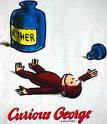I will do my final reader's response of poetry on Walt Whitman's "When I Heard the Learn'd Astronomer" because there were several things I thought he did very well.
The first thing I would like to talk about is his success at using sonic techniques to enhance the tone and topic: boredom with facts, stats, etc. The repetition of "when" at the start of the first four lines signifies this boredom. The narrator sounds intellectually bored, as if things are dragging on. There are also more commas in the first four lines, creating shorter phrases. This adds to the methodical step-by-step feel, which mirrors the poem's tone. By contrast, the last four lines take on the opposite tone. The lines are left primarily unbroken, allowing them to flow along. Also, he uses words that allude to this flow and openness, both contextually and sonically: "rising and gliding," "mystical moist," "wander'd," etc. This shift in tone from broken up, repetitious boredom to flowing, lyrical excitement is well executed by Whitman.
Also, I really like how Whitman sets the first two scenes as opposites, in order to compare the two mindsets and moods. In the first, the narrator listens to an astronomer in a loud, crowded lecture hall. In the second, he is alone, in silence, and stares in awe at the stars. Because astronomer's study space and the stars, Whitman consciously chose the narrator to be listening to him so that the two mindsets would be viewing the same subject. This emphasizes their differences. The poem suggests the superiority of the second (e.g. its freedom, its mysticism, its spiritual connectedness), as is demonstrated by the narrator seeking out the nature in-person in order to cure the sickness he felt in the lecture hall. He is out getting connected with the real thing. He feels the moistness of the air. The tone switch underplays this idea as well.
In conclusion, I think that Whitman does a great job of painting the stark contrast between science, fact, and logic, and Romantic era beliefs in mysticism, the supernatural, etc. He does this by crafting the rhythm, flow, and sound of the poem: repetitious, dull, and ordered vs. flowing, open, and lyrical. He also achieves this by juxtaposing the two scenes.
Subscribe to:
Post Comments (Atom)

No comments:
Post a Comment